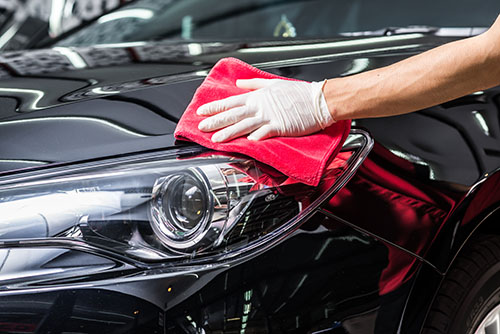You know the feeling when you went for your first test drive in a brand new car? Do you remember opening the door, sitting down inside, feeling the seats envelop you? Breathing in the new car smell, that’s so unique you never smell anything similar anywhere else? Do you remember casting your eye over the cockpit and appreciating the way everything looked?
How about when you first saw it in the showroom? Do you remember that? How shiny and new it looked? How it was obvious that this was a car that was pristine, had never even been driven? How much prestige and respect it seemed to command just by sitting there, because it looked so sharp, clean and new?
Imagine if your car could look like that. Every single day.
I know. It sounds ridiculous. Pure hyperbole. In the past, I would have agreed with you, but technology marches on. In the past few years, the science of car care has advanced in leaps and bounds, to the point that we’re using legitimate nanotechnology to keep our cars polished and protected, like something out of Star Trek.
See, more than $8 billion (yes, billion) dollars are spent a year working on new ways to keep our cars looking clean and shiny, as well as keeping that expensive paintwork like new.
What is nanotechnology paint protection?
Once upon a time, if you wanted to keep your car looking clean, you had to keep it in the garage every night, clean it at least once a week, polish it every opportunity you got, and god forbid it rained the day after you did any of this.
The problem with the old ways is we relied on wax and polish to keep our cars clean. Wax works, but because it only sits on the surface of your car, as soon as there’s a bit of inclement weather, it starts to wash off.
Nanotech coatings don’t do this. Instead, as part of the process, they literally bond with the paintwork of your car on a molecular level, becoming inseparably attached to the paint so no wind, rain or sun can remove them.
Because of this, once they’re on, they’re on. As long as they’re applied correctly, most nanotech paint protection coatings will last at least a year, if not longer.
Sounds great, I hear you say, but what do they really do?
What does nanotechnology paint protection for cars actually do?
First, and perhaps most obviously, it protects your car.
Because it’s a surface coating on top of the paintwork of your vehicle, a coating like this provides an immediate barrier to the paint, meaning if anything does touch your car, it’s going to hit this barrier first.
Don’t get me wrong. It’s not going to stop a high speed stone thrown out of the wheels of a truck from putting a dent in your car. But against scratches, bird droppings and general wear, it’s a big help. After all, it’s just another layer to get through before you reach the vulnerable paint.
Second, and the biggest benefit, is they provide your car with massive amounts of protection against the elements.
Nanotechnology paint coatings are generally anti static and water repellent, which means water can’t get any sort of stability on the surface, instantly beading up and running off of your bodywork.
The vast majority also have some sort of UV protection built in, so the sun can’t burn out and bleach your paintwork, the number one cause of aged and tired looking paint.
Third, because of the make up of these coatings, they are also highly resistant to corrosion and chemical wear, including acid wear. They’re so effective in this role that it’s actually possible to buy specific protection kits designed just for alloy wheels. After all, it’s the wheels which are in contact with the road and take the vast majority of the spray and grime.
Lastly, they keep your car looking brand new. Because of the process involved, and because nothing can affect your paint, it takes far longer to fade naturally, as well as staying cleaner when you do clean it.
Are there any downsides to nanotechnology paint protection?
There are downsides to everything, and it’s definitely something to consider when you’re thinking about purchasing and applying one of these to your vehicle, or paying a specialist to do it for you.
The most obvious downside is that the car has to be absolutely clean before you begin applying the coating. Because you’re applying a long term hardwearing coating to your car, if the surface is not completely clean it’s possible to trap particles under the surface layer, and you won’t be able to remove them until the nano layer wears away naturally.
Another issue is the coatings themselves. Because they are so strong, they tend to be intensely harsh, aerosolize quickly and smell incredibly potent. It’s not advised that you use these chemicals in any enclosed environments, and use any mask or breathing gear specified in the instructions.
The last issue is cost. Whilst they aren’t that expensive, they are more expensive than standard car treatments. Of course, when you add up the money you save in the long run, the scale swings the other way. But the initial outlay is higher.
